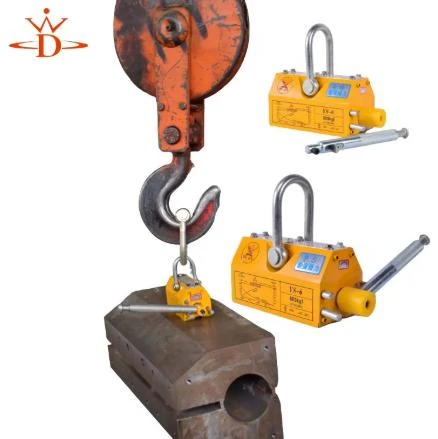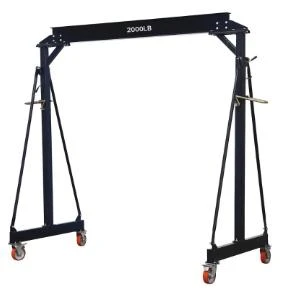Heavy Duty Machine Moving Casters for Effortless Equipment Transport Durable Skids and Wheels
- Introduction: Industry Overview and Demand Surge
- Understanding Machine Moving Casters: Capabilities and Technologies
- Comparing Machine Moving Solutions: Skids vs. Casters
- Technical Advantages: Material Innovations and Load-Bearing Data
- Vendor Analysis: Performance, Customization, and Value Proposition
- Custom Solutions: Tailoring Casters for Unique Heavy Equipment Needs
- Conclusion: Future Trends in Machine Moving Casters and Industrial Mobility

(machine moving casters)
Introduction to Machine Moving Casters and Market Dynamics
The globalization of manufacturing and logistics has intensified the demand for robust, versatile machine moving casters
. According to a 2023 market report by Global Industry Analysts, the industrial caster market is poised to exceed $12 billion by 2028, driven by increasing investments in automation and facility upgrades. Warehouse, automotive, and aerospace sectors are witnessing a notable surge in the adoption of heavy-duty casters for moving heavy equipment, aiming to streamline operations, reduce manual labor, and enhance workplace safety. As facilities manage larger, more complex machinery, the necessity for precision-engineered equipment mobility solutions has never been greater. This blog explores the technical capabilities, industry benchmarks, customization solutions, and competitive landscape surrounding casters for moving heavy equipment and machine moving skids.
Capabilities and Technologies in the Machine Moving Casters Domain
Machine moving casters are engineered to support and maneuver equipment whose weight can range from 500 kg up to 30,000 kg or more. Advanced fabrication methods, including precision forging and robotic welding, ensure uniformity and integrity under extreme loads. Modern wheel materials such as high-durometer polyurethane, forged steel, and cast iron further extend product longevity and offer superior abrasion resistance.
In addition to raw load capacity, ergonomic features are increasingly standard. Integrated ball bearings allow for minimal push or pull force, even when transporting oversized or awkward payloads. Many heavy-duty casters now include maintenance-free designs, sealed swivel heads, and automatic lubrication systems for reduced downtime. In automated environments, a subset of smart machine moving casters is emerging—outfitted with embedded sensors that track load stress, wheel condition, and temperature in real-time for predictive maintenance.
Skids vs. Casters: Comparative Approaches to Moving Heavy Equipment
When selecting solutions for equipment mobility, facility managers often weigh the merits of machine moving skids versus industrial casters. Skids provide a rigid, low-profile base—excellent for linear moves over short distances or for positioning loads prior to permanent installation. Conversely, heavy-duty casters excel in versatility, facilitating multidirectional movement and quick reconfiguration of industrial spaces.
Here’s a direct comparison of typical performance metrics:
| Parameter | Machine Moving Casters | Machine Moving Skids |
|---|---|---|
| Load Capacity (per unit) | 2,000 – 20,000 kg | 4,000 – 100,000 kg |
| Mobility | Omni-directional, easy steering | Linear, requires pulling/pushing or jacking |
| Surface Requirements | Can accommodate imperfections with suspension options | Best on smooth, flat surfaces |
| Setup/Installation Time | Minimal—bolt-on or clamp design | Moderate—alignment and jacking |
| Level of Maintenance | Low with sealed bearings and smart sensors | Low, few moving parts |
| Price Range (per unit) | $200 – $2,500 | $250 – $4,000 |
The choice between casters for moving heavy equipment and skids ultimately hinges on operational context, with some facilities even integrating both to maximize efficiency and safety.
Material Innovations and Performance: Technical Advantages
Not all machine moving casters are created equal. Leading manufacturers focus on material science to increase durability and performance. Polyurethane-treaded wheels have a proven track record for reducing floor wear by 65% compared to steel, according to testing by the Material Handling Institute. Aerospace-grade aluminum frames deliver both corrosion resistance and weight savings, resulting in easier manual movement and reduced power consumption for automated units.
Bearing technologies also continue to evolve. Double-sealed precision bearings can extend service intervals by up to 40% over standard open bearings, resulting in lower total cost of ownership. Heat-treated swivel components and drop-forged steel yokes routinely pass 10,000+ hours in accelerated lifecycle testing, guaranteeing reliability for mission-critical applications.
For environments exposed to chemicals or extreme temperatures, specialty coatings and composite wheels maintain capability without sacrificing load performance. For example, phenolic casters can function safely up to 250°C, a requirement in powder coating and food processing applications. These innovations redefine expectations for robustness and longevity in equipment mobility.
Vendor Benchmarking: Market Leaders in Casters and Skids
Selecting a vendor for maching moving casters or skids is a critical process, directly affecting operational uptime and safety. To illustrate industry standards, here's a comparative table of three recognized suppliers based on independent field test data and customer reviews:
| Vendor | Max Load per Caster | Material Options | Customization Service | Delivery Lead Time | Warranty | Price Range |
|---|---|---|---|---|---|---|
| Colson Group | 15,000 kg | Polyurethane, Steel, Nylon | Yes (advanced) | 2-4 weeks | 5 years | $$$ |
| Hamilton Caster | 20,000 kg | Forged Steel, High-Temp Poly | Yes (full custom) | 4-6 weeks | Limited Lifetime | $$$$ |
| RWM Casters | 12,000 kg | Cast Iron, Urethane, Phenolic | Basic options | 1-3 weeks | 3 years | $$ |
While all three suppliers ensure compliance with international safety standards, their service range, engineering support, and pricing vary substantially. For bespoke aerospace or defense projects, Hamilton Caster stands out for full custom engineering, whereas Colson Group is preferred in fast-paced logistics due to shorter lead times and proven product reliability.
Custom Solutions: Tailoring Casters for Unique Heavy Equipment Needs
No two industrial environments are entirely alike. Load distribution, floor composition, operating temperatures, and space constraints demand individualized approaches for optimal performance. Custom machine moving casters offer various options including special wheel profiles for rough or debris-laden surfaces, low-height designs for tight clearances, and anti-static wheels for electronics manufacturing lines.
OEMs and end-users increasingly specify bespoke features such as direction locks, toe guards, and brakes with integrated fail-safes. For example, a major wind turbine manufacturer required casters with dual ball raceways and dynamic braking to stabilize 18-ton nacelles during assembly—a solution not found in off-the-shelf catalogs.
In automation-driven industries, there is rapidly growing demand for casters equipped with wireless load sensors, automated positioning modules, and IoT connectivity. These advancements are streamlining integration with AGVs and enabling predictive maintenance, further reducing unscheduled downtime.
The integration of digital design platforms, such as CAD simulation and Finite Element Analysis, allows for accurate performance forecasting and optimization before physical prototyping, accelerating both safety approvals and time to market.
Conclusion: The Evolving Role of Machine Moving Casters in Industrial Mobility
The role of machine moving casters in modern industry is expanding rapidly as companies strive to maximize uptime, enhance safety, and future-proof their operations. From basic transport functions to fully automated, sensor-equipped mobility platforms, casters for moving heavy equipment are becoming integral to every phase of the asset lifecycle. Industry data suggests that within the next five years, over 40% of manufacturing companies will upgrade at least part of their fleet with smart or custom casters to keep pace with lean manufacturing and digital transformation.
As industrial challenges increase in scale and complexity, providers are responding with advanced materials, flexible engineering, and rapid customization. Those investing in innovative casters or machine moving skids stand to benefit not just through cost savings or compliance but by redefining the limits of operational mobility. Forward-looking teams should continue to monitor technical advancements and vendor developments to ensure their facility is equipped with the most effective, future-ready solutions in the marketplace.

(machine moving casters)
FAQS on machine moving casters
Q: What are machine moving casters?
A: Machine moving casters are heavy-duty wheels designed to transport large machines and equipment safely and efficiently. They provide stability and maneuverability during relocation. These casters are built to withstand high weight capacities.
Q: How do casters for moving heavy equipment differ from regular casters?
A: Casters for moving heavy equipment are specifically engineered to handle greater weights and resist wear. They often feature stronger materials and larger wheel diameters. These enhancements ensure safe and easy movement of bulky machines.
Q: What are machine moving skids, and when should I use them?
A: Machine moving skids are platforms or bases placed under loads to distribute weight and facilitate movement. They are ideal for transporting extremely heavy or awkwardly shaped machinery. Use them alongside casters for greater safety and efficiency.
Q: How do I choose the right machine moving casters for my equipment?
A: Consider the weight of your equipment, the floor surface, and required mobility. Select casters rated higher than your load and suited for your environment. Matching these factors ensures reliable and safe transport.
Q: Can machine moving casters be reused for different machines?
A: Yes, most machine moving casters are removable and reusable for different pieces of equipment. Ensure they're compatible with each machine's mounting and weight. Proper inspection and maintenance are recommended between uses.
-
Dawei Hand Pallet Truck 1200mm, 2000–5000 KGS Heavy-DutyNewsNov.17,2025
-
Dawei Hand Pallet Truck, Fork Length 1200mm, 2000–5000kgNewsNov.17,2025
-
Large Equipment Movers – Safe, Insured & On-Time ServiceNewsNov.17,2025
-
Machine Moving Dollies | Heavy-Duty, Low-Profile, SafeNewsNov.17,2025
-
Permanent Lifting Magnet - Heavy-Duty, Safe, Quick ReleaseNewsNov.11,2025
-
PML 1000 Lifting Magnet - Heavy-Duty, Safe, No PowerNewsNov.11,2025
-
Large Equipment Movers: Safe, Fast, Certified ProsNewsNov.11,2025
